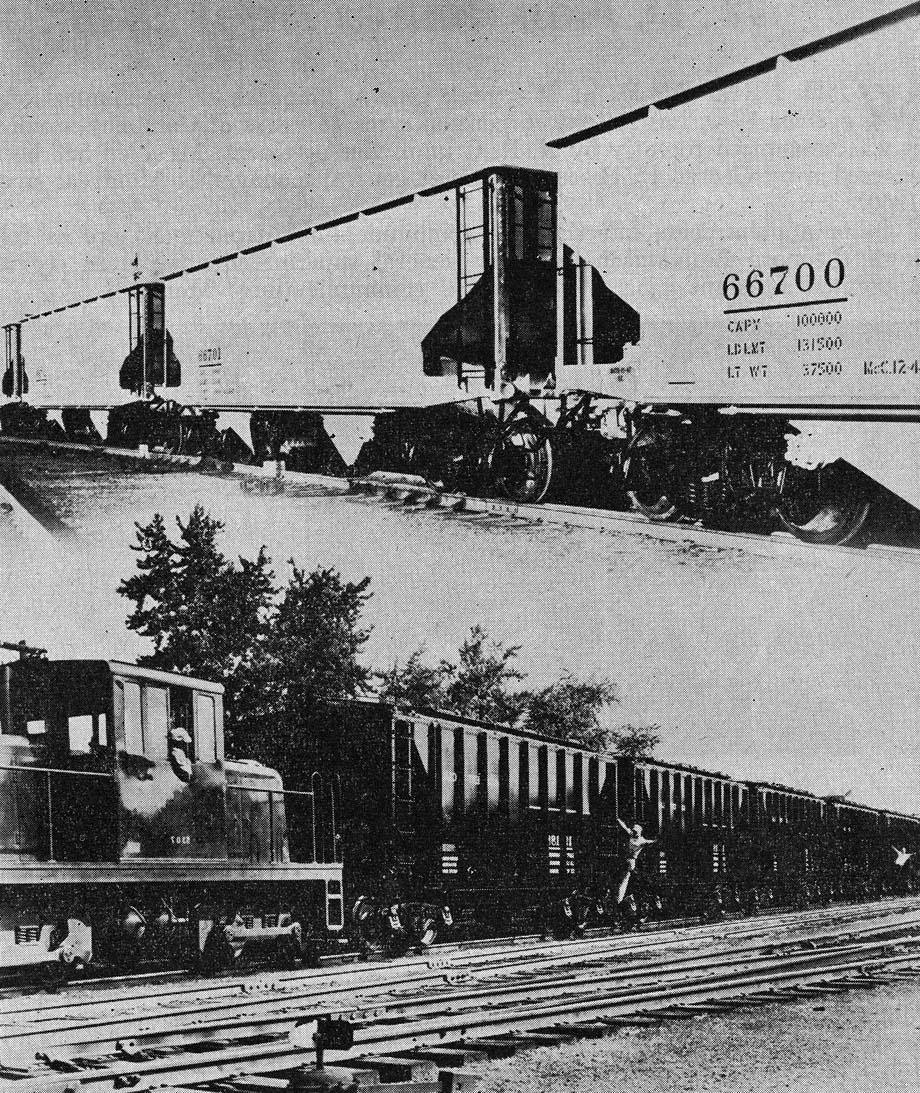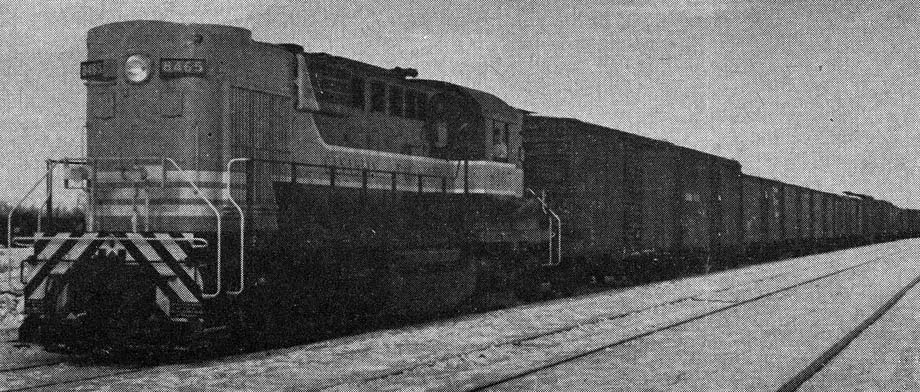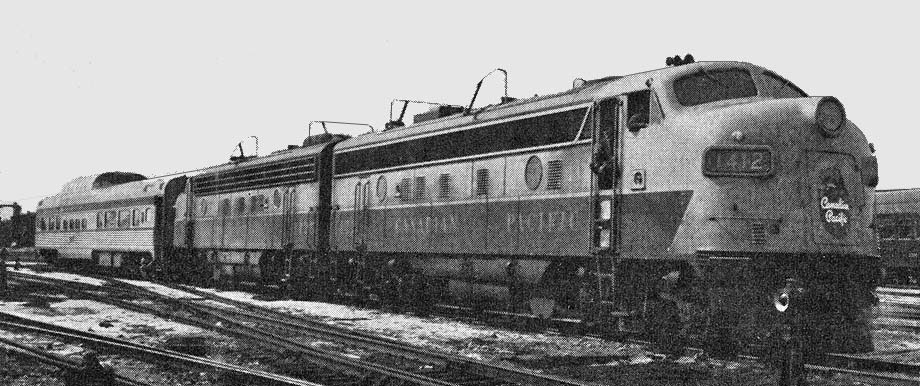

Railway Hopper Cars Are Transportation Mules
Poems have been written and ballads have been sung about the wandering box car, but who ever heard of
even so much as a ditty about that great burden-bearer of the rails, the hopper car?
The importance of the hopper car in the business of railroading is indicated by the fact that nearly one third of all freight cars owned by the railroads of the United States are of this type. Thirty-one out of every 100 railway cars loaded with revenue freight in 1952 were hopper cars.
Most hopper cars have open tops similar to gondola cars, but many thousands of hoppers have roofs fitted with loading hatches. These covered or closed-top hopper cars are used for carrying soda ash, cement, lime, phosphate, and other commodities which must be kept clean and dry.
On the strong shoulders of the open-top hopper car are borne a large part of all the coal and coke, sand, and gravel, phosphate rock, iron ore, manganese ore, zinc ore, and concentrates, broken, ground, and crushed stone, lime, salt, sulphur, and other heavy bulk materials so essential to the industrial life of the country.
To perform its Herculean tasks, the hopper car is sturdily built of heavy reinforced steel. It is capable of taking an amazing amount of punishment. Nearly all hopper cars are equipped with floors which slope toward the centre of the car. These are called self-clearing cars. Most hoppers have two drop doors for rapid dumping. Some are equipped with four drop doors.
Hopper cars came into use in the United States as far back as the 1870's. One of the earliest types, if not
the first, was a 4-wheel, wooden, semi-well car, placed in service on the Pennsylvania Railroad in 1879. Built
with sloping end plates and drop doors, this car weighed less than 4 tons and had a capacity of only 6 1/2 tons.
Another car, built about 1880, had an iron body and a capacity of 13 tons. The first steel hopper cars were
built in 1896 for the Pittsburgh Bessemer & Lake Erie Railroad, now known as the Bessemer & Lake Erie.
Thereafter the use of steel hopper cars increased rapidly.


 Railway Limited and is reprinted here with their permission. All photographs, logos, and
trademarks are the property of the Canadian Pacific Railway Company.
Railway Limited and is reprinted here with their permission. All photographs, logos, and
trademarks are the property of the Canadian Pacific Railway Company.
